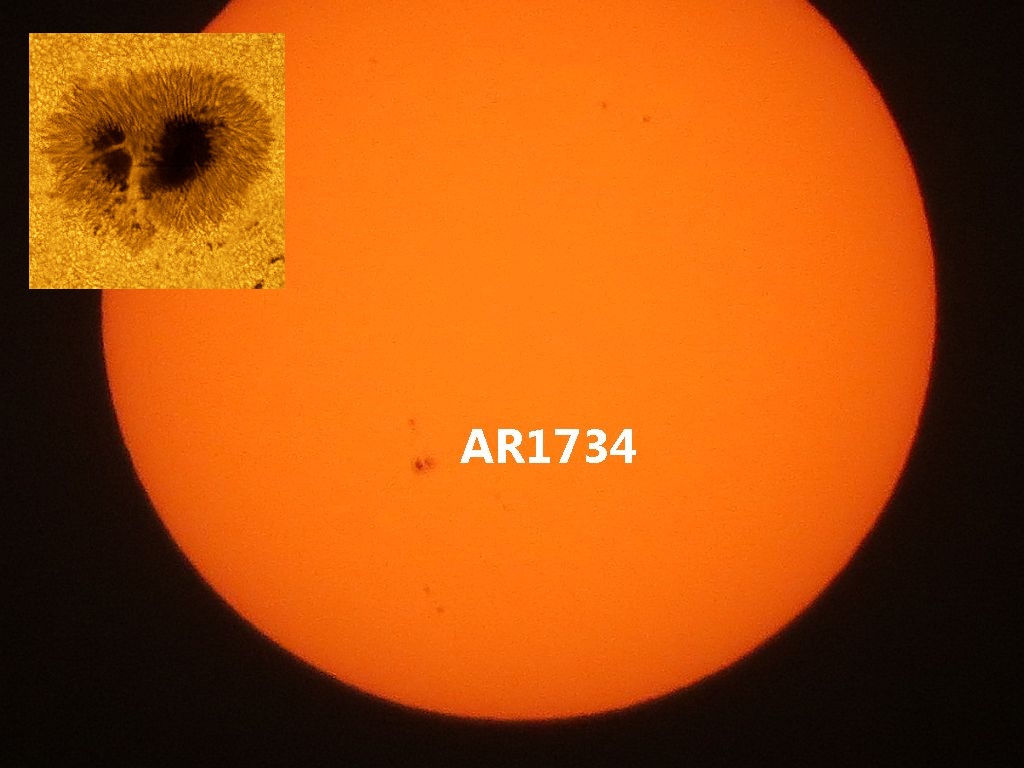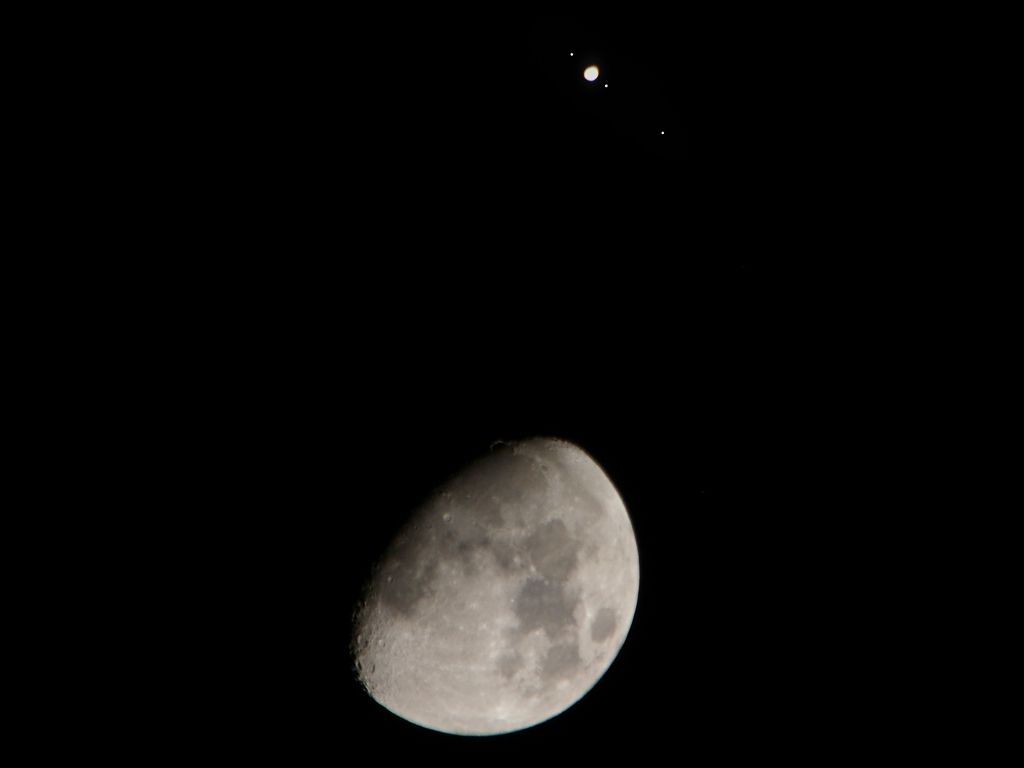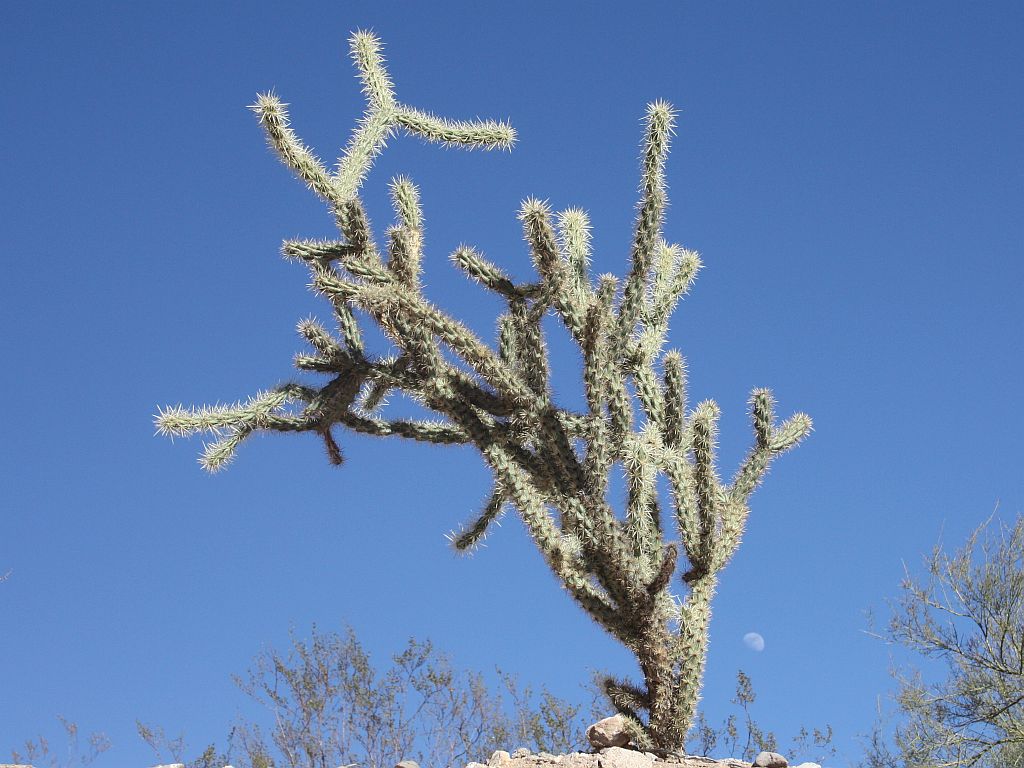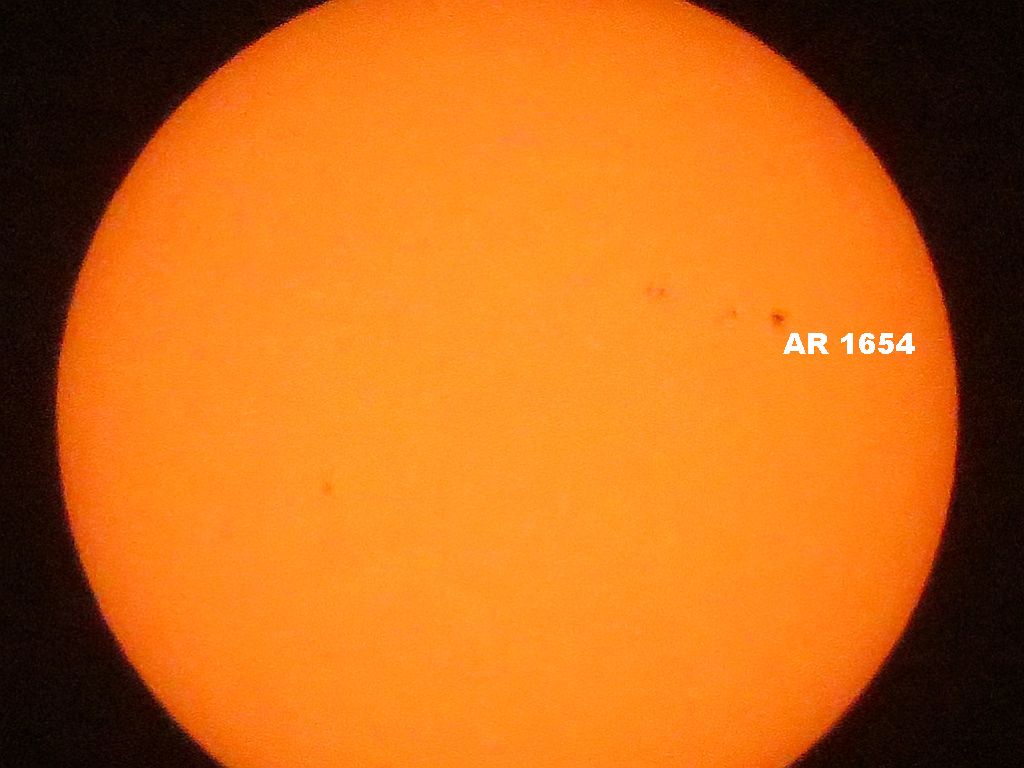The sun, Venus, Mars and Uranus are all gathered in the sky in tight formation. Unfortunately, without the aid of the scientific instrumentation on the Solar and Heliospheric Observatory (SOHO), nobody can observe the event because of the sun’s glare. The animation below shows the event with a solar shield in place as seen by SOHO. Refer to the link below the animation to identify the planets. (Hint: Uranus is pretty hard to see in the noise and clutter in the animation.)
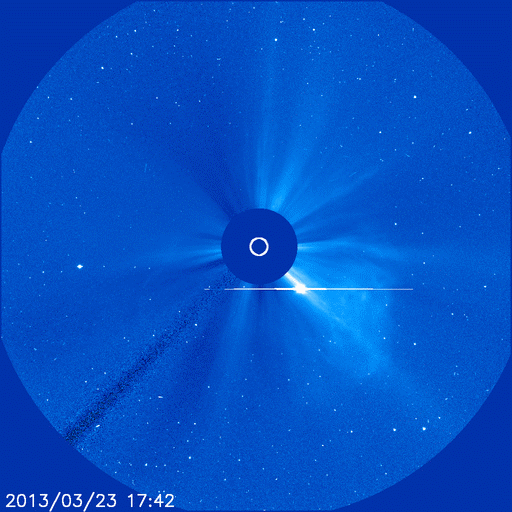
Excerpt of the description of the event from SpaceWeather.com:
DAYLIGHT ALIGNMENT OF PLANETS: Venus, Mars and Uranus are gathering for a remarkable alignment. But don’t bother looking for the conjunction; it is happening in the daylight sky within a few degrees of the glaring sun. Using an opaque disk to block the glare, coronagraphs onboard the Solar and Heliospheric Observatory (SOHO) are able to track the planets.
Venus and Uranus will cross paths within 1.5 degrees of the sun on March 27-28. Mars and Venus have their own very close encounter on April 6-7. Mars will be so close to the sun throughout the month of April that it will limit NASA’s contact with the Mars rovers and orbiters.

